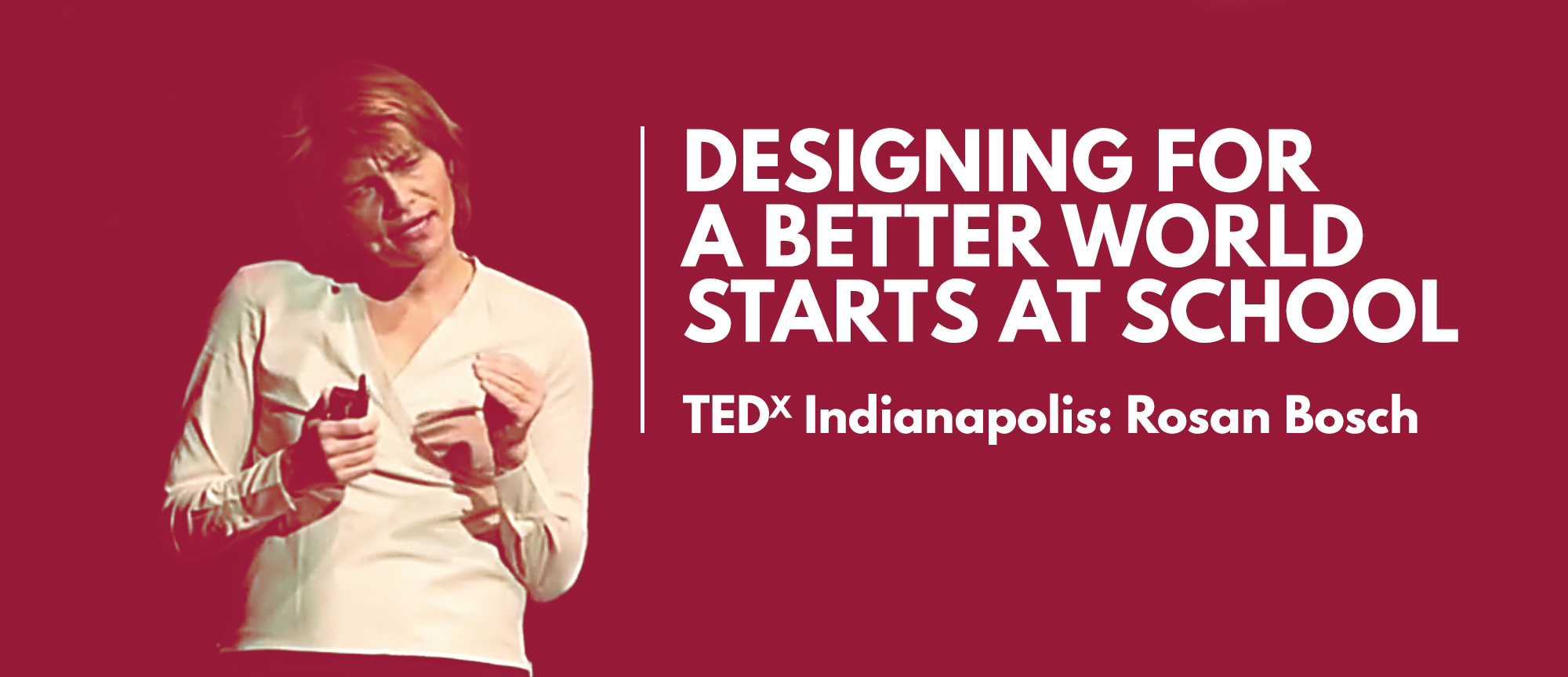At our Learning Environments session on August 16, we listened to architect Rosan Bosch talk about the design of learning environments. Ms. Bosch’s 15 minute TedX Talk is thought provoking. The Scandinavian project that she designed splendidly changes the physical environment of traditional educational institutions and successfully turns the school into a meaningful and significant experience that engages children in a whole new way. The colorful and imaginative interior space and furnishings kindles mindfulness and play. By deploying unconventional organization of space through “Educational Markers” and a total lack of formality it encourages informal group gathering, shared teaching and shared learning.
She proposes that we must change the common perception of the learning environment, so that children can take responsibility for their own learning and become engaged, excited, explorative, and curious about the world that they are living in. Therefore as architects, it is our challenge to overcome and change the way that school is designed and built, so children can be better prepared for what their future demands, become lifelong learners and creative thinkers.
The informal conversation following this presentation among McGranahan colleagues was lively and diverse. We discussed the possibility and probability of designing a non-traditional school with public funding, the sociological issues, economic inequities, mental and physical disabilities, and everything in between, including teaching styles and techniques.
Contemporary educational trends call for school designers to create environments that motivate and inspire with a holistic design approach, maximize flexibility, pay attention to personal needs, and be respectful of the planet. While we can be inspired by Ms. Bosch’s project and design approach, as architects practicing in the USA we have different building codes, funding process, construction practices, and building performance expectations. Our pedagogical ideology and societal norms are vastly different from our European colleagues. This “road to change” seems daunting, tedious, and difficult, however a couple of thoughts towards the end of the McGranahan discussion stood out and got us all thinking differently:
What is the ratio of “Educational Marker” space to traditional space in this Copenhagen school?
How are the seemingly traditional school and structured teaching styles in Singapore, Hong Kong and Canada producing respectful students and higher testing scores?
Does that mean Educational Culture is the key to pedagogical success?
Shall we commission Design Intent, measuring the ratio of Educational Markers and traditional space relative to test scores, in similar way that we commission a building’s energy input and output?
We don’t have answers or solutions to all our questions, yet it is certain that “change” is here. There are a plethora of studies on learning environments, student motivation and whole-child education that can be easily found in printed books and the worldwide web. But how can these resources become practical design tools and help us design a better school? Good design cannot be prescribed by a checklist and program area, nor be qualified by esteemed peer reviews; so, for a moment, it felt like Ms. Bosch is preaching to the converted. What CAN we change in the way school is designed? How can we as designers work more proactively with teachers and educators to develop designs that bridge the gap of social poverty?
I believe the solution lies in going back to the basics. Perhaps through an evolution in thinking about the way schools are designed. Instead of form follows function, form follows a story. Architecture becomes a script. A school tells the story of students, their environments and what they can become. By becoming a proactive listener, architects will design school environments that express the true strength, character, integrity, and inspiration of its community. Architecture can become part of the movement that bridges social inequity, thus creating a better world.

